Bonking sucks. There is no way around it.
As you start to get dizzy, feel nauseous, and your legs turn to jello, you quickly realize you haven’t eaten enough. Your body has run out of fuel, and there is nothing you can do about it. The decisions you made hours ago have led you to this point.
But thankfully, there are things you can do to prevent bonking.
This post details how to avoid bonking using carbohydrate drink powder (mixes). Let’s get stuck into it and learn what is bonking, why it happens, and how to prevent it.
Disclaimer: This page may contain affiliate links.
What is Bonking?
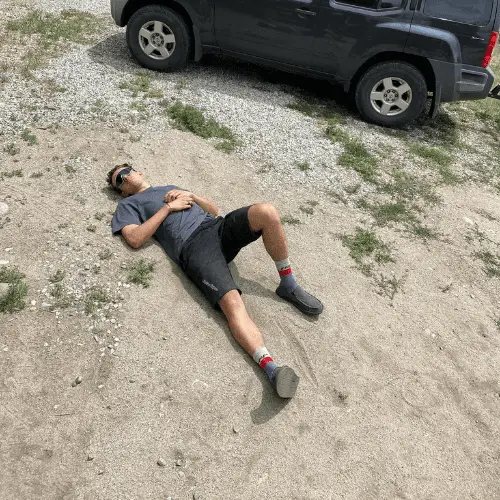
“Bonking” is a slang term used by mountain bikers and cyclists. It refers to when your body runs out of carbohydrates and loses energy.
A bonk usually takes place multiple hours into a ride. Common symptoms include a lack of energy, dizziness, vomiting, pale skin, and inability to think clearly. Yes, it sucks.
But what causes all of this unpleasantness?
Learn why I love wearing bib shorts mountain biking.
What Causes a Bonk?
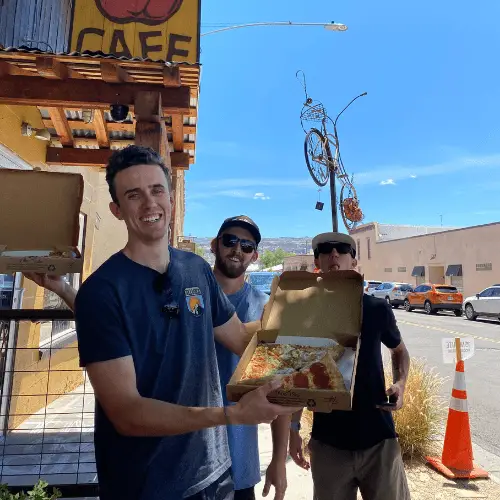
Bonking occurs when your body runs out of glucose and depletes the available glycogen in your muscles. Bonking is also referred to as exercise-induced hypoglycemia.
To understand this process better, let’s look at how the body creates glucose.
When you eat carbohydrates, your body breaks them down into glucose, a simple sugar your body uses for energy. If it is not used right away, it is stored in the muscles as glycogen.
As you exercise, your body uses glucose. Once all the glucose is gone, your body burns the glycogen stored in your muscles. At a certain point, your body stops burning glycogen and shuts down energy production. This is a bonk.
To prevent a bonk, you need to keep your glucose topped off. The best way to do that is to eat carbohydrates.
However, you need to eat more than you might think.
How to Use Carbohydrates to Prevent Bonking
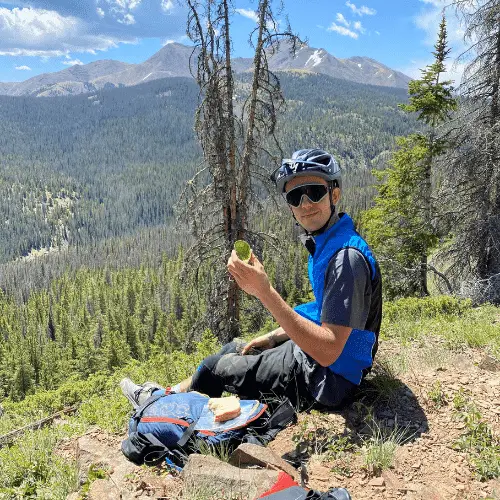
The best way to prevent a bonk is to eat 50-90 grams of carbohydrates every hour for activities longer than one hour. Start with 50 grams of carbohydrates and work your way up once you get used to eating them during your activity.
Good carbohydrate-rich snacks include bananas, dates, gels, bars, and carb powders.
Moreover, you want a snack that is easy to carry and quick to digest. While I love bars like Larabars and Bobo because they are tasty and packed with carbs, they are slow to digest. Plus, you have to stop riding to eat them.
Thus fruit, gels, and carb powders are better options.
But personally, there is nothing that beats a good carb powder.
What are Carb Powders?
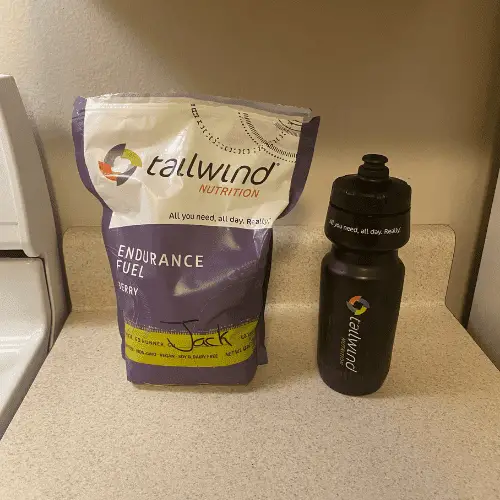
Carb powders are drink mixes made with fast-acting carbohydrates and electrolytes.
These drink mixes are superior to other types of snacks because they are easy to carry, easy to consume and hydrate you at the same time.
Carb powders are super easy to carry. Just add 1-2 servings to your water bottle or hydration pack and shake it up. Now your snack is mixed with the water you were already carrying. As you drink down the mix, you are consuming calories and hydrating yourself.
How to Use Carb Powder to Prevent a Bonk
Mix 1-2 servings of carb powder, 30-60 grams of carbs, with 16-22 oz of water. Drink at least one serving of the mix every hour of your ride.
I use Tailwind Nutrition’s berry carb powder because I love the taste, and it uses natural ingredients that don’t hurt my stomach.
GU and Skratch Labs also have great products. Just make sure to read the nutrition facts before buying. You want something with at least 25 grams of carbs per serving. You don’t want to accidentally buy a hydration mix.
Conclusion
I hope this article is useful and keeps you from bonking out. If you have any questions or want to chat, drink mixes feel free to shoot me an email.
References:
Murray, B., Rosenbloom, C. ( 2018). Fundamentals of glycogen metabolism for coaches and athletes
Bourdas, D. I., Souglis, A., Zacharakis, E. D., Geladas, N. D., & Travlos, A. K. (2021). Meta-Analysis of Carbohydrate Solution Intake during Prolonged Exercise in Adults: From the Last 45+ Years’ Perspective. Nutrients, 13(12), 4223. https://doi.org/10.3390/nu13124223
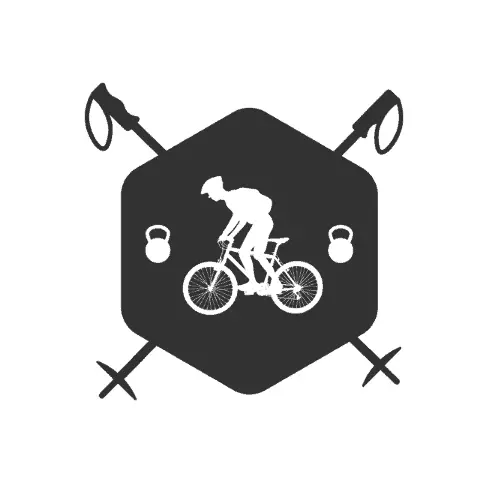


Comments are closed.